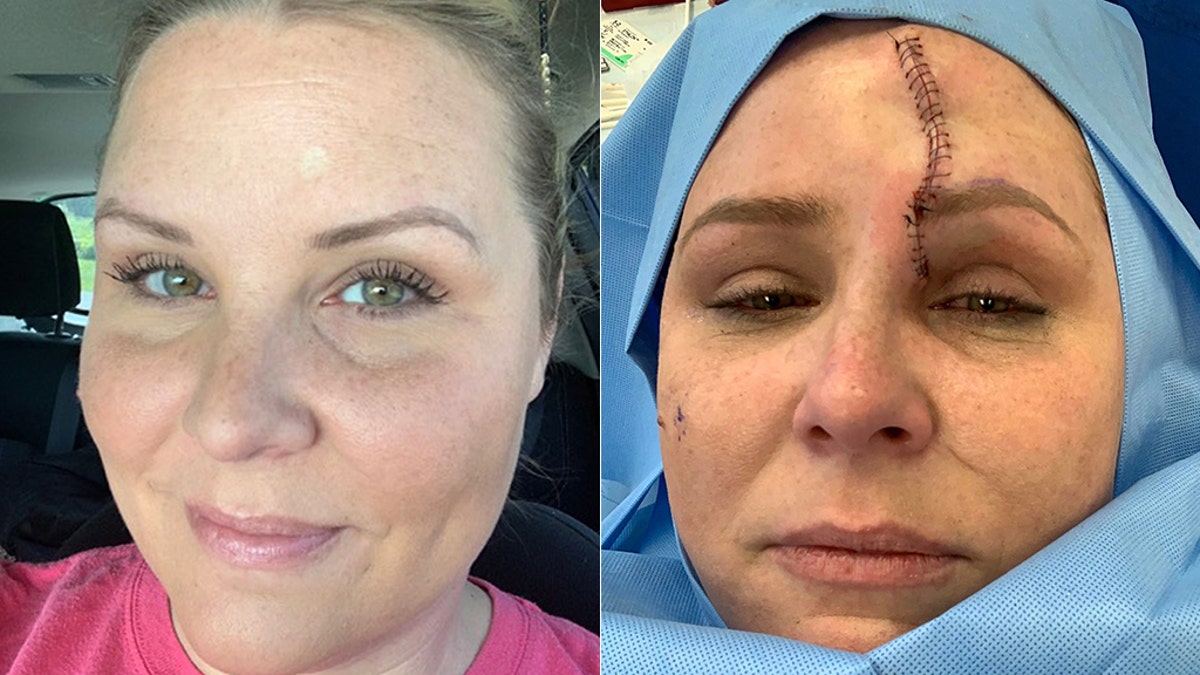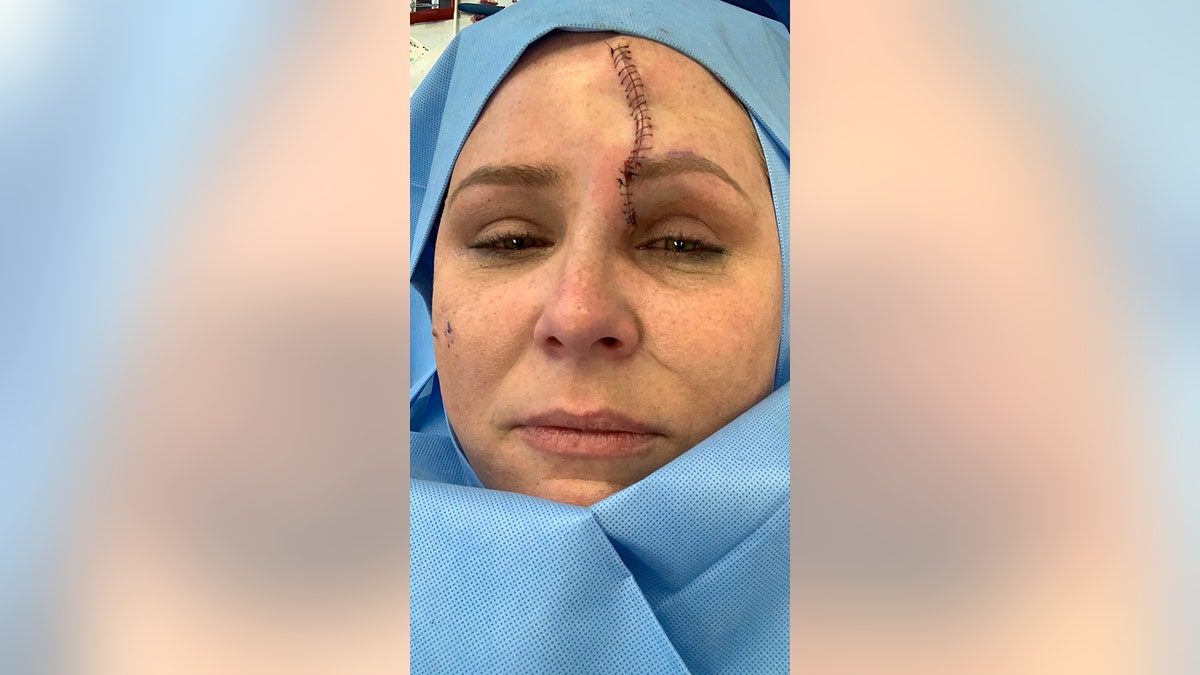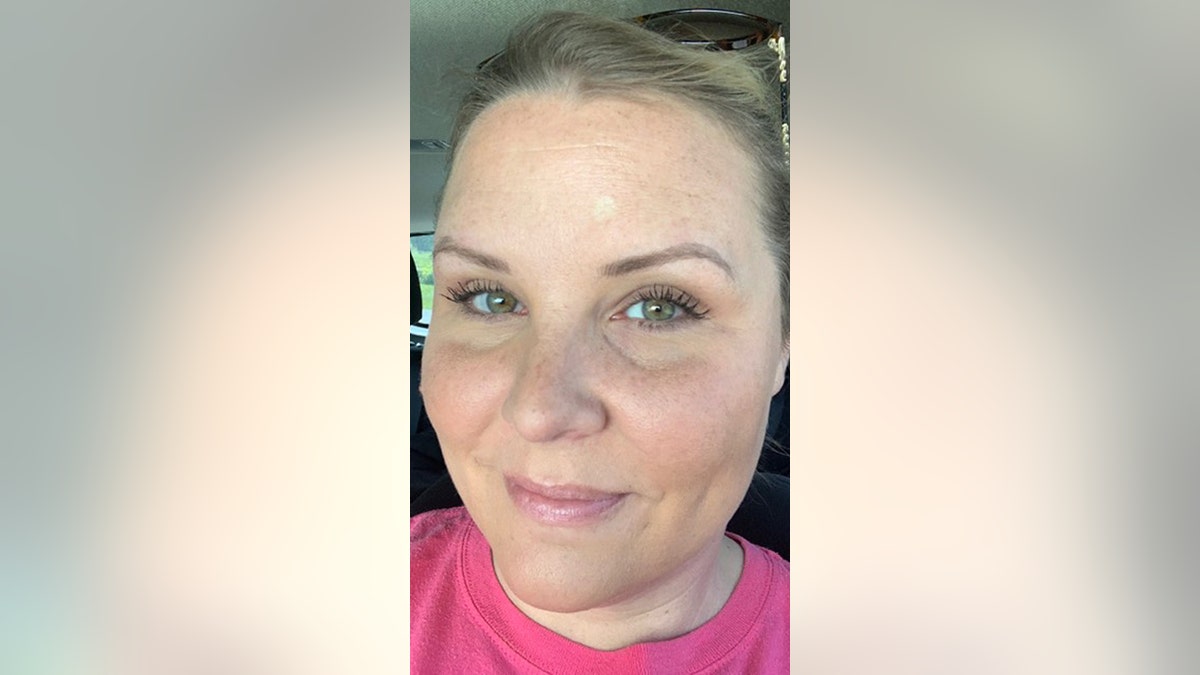A mom is warning others about the dangers of tanning beds after she developed skin cancer and was left with a 4-inch scar on her forehead as a result.
Carrie Searcy, 38, who lives in Kentucky, said she used tanning beds multiple times a week from ages 16 to 25. She said she was “obsessed with looking as tanned as [she] could.”
EX-CHEERLEADER'S SKIN CANCER LEFT HER WITH GAPING HOLE IN HEAD
“I would go on tanning beds three times a week and never wear sunscreen,” she said, according to the Daily Mail. “I would see models in magazines or on TV and think that was how tanned I needed to be, so [I] would do whatever it took to get there.”
A couple of years ago, however, Searcy, a mom of one, said she noticed a “waxy-looking” white spot on her forehead. It continued to get bigger and bigger over time. The 38-year-old said she “tried everything she could” to treat the spot, but now admits that “deep down, I knew what it was.”

Carrie Searcy with the white spot on her forehead (left) that she would later learn was skin cancer. (Caters News Agency)
In December, she went to see a dermatologist who took a biopsy of the spot, which confirmed her worst fears: the mark was indeed skin cancer; basal cell carcinoma, specifically.
At first, even though being told she would require surgery, the mom said she thought all would be fine because the spot was about the size of her fingertip. But, she said, “The nurse told me that cancer is like an iceberg — it’s always bigger under the surface.”

Carrie Searcy following surgery. (Caters News Agency)
PORTRAITS REVEAL 'INVISIBLE' SKIN IMPERFECTIONS CAUSED BY UV RAYS
“They ended up cutting out a chunk about the size of a quarter,” she said.
“'When I saw the stitches I was terrified. I cried and cried because I realized just how big the scar was and, in turn, how much cancer there must have been,” Searcy continued, adding she had two layers of stitches following the procedure.

Carrie Searcy's waxy looking spot that she couldn't get rid of. (Caters News Agency)
Skin cells are damaged when exposed to ultraviolet (UV) light, which is present in both the sun and tanning beds. In fact, according to the Skin Cancer Foundation, those who use tanning beds before the age of 35 “increase their risk for melanoma by 75 percent.”
A person’s risk of developing basal cell carcinoma, the type of cancer Searcy was diagnosed with, increases by 29 percent after just one tanning bed use, per the American Academy of Dermatology.
CLICK HERE TO GET THE FOX NEWS APP
Moving forward, Searcy said the entire experience has shown her that “tanning isn’t worth it.”
“There are safer alternatives to achieve the tanned look and sunbeds or sun exposure are not necessary," she said.





















